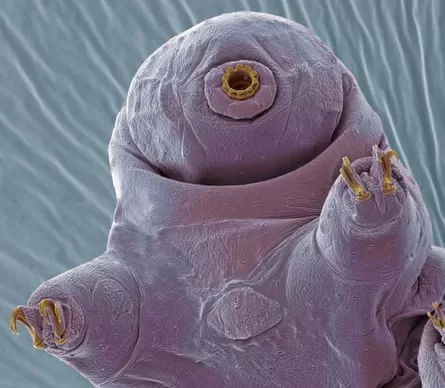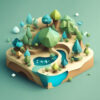“We are following the “invertebrate of the year” series with bated breath,” began the email that arrived in the Guardian’s inbox last week.
Mark Blaxter leads the Sanger Institute’s Tree of Life programme, a project that sequences species’ DNA to understand the diversity and origins of life on Earth. But far more importantly, Blaxter and his team are superfans of our invertebrate of the year competition and have offered to map the genome sequence of whoever wins this year.
“The genome sequence of each species is a kind of time machine – we can look back through evolutionary history to understand its origins, and also go some way to saying how the species is faring under the climate emergency,” he said. “Each and every genome includes amazingly detailed insights into the ‘special powers’ of the species, increasing our depth of understanding.
“As part of our daily work, we are picking up interesting species to sequence,” Blaxter told the Guardian. “And the ones we pick are often interesting for the same reasons they are nominated for invertebrate of the year.” They have superpowers, they’re beautiful, they have crazy lifecycles.
Blaxter’s team, which voted for the 2024 winner, the common earthworm, has already sequenced many creatures on the 2025 shortlist. The tiny tardigrade? Done. The dark-edged bee fly, a twerking impostor that drops sticky egg bombs? Done. The evolutionary scandal that is the common rotifer has also laid bare its genetic code. So has a close relative of the tongue-biting louse, a nominee whose name only begins to describe the horror of its antics.
after newsletter promotion

The shortlisted tardigrade, Milnesium tardigradum, is the size of a speck of dust. When hunkered down it completely dries out, yet its cells and DNA are preserved. In this shrunken “tun” state, the animal needs no food or water and can endure DNA-shattering radiation. Rehydrate the little ball and the creature carries on as before. “It’s amazing to watch,” says Blaxter, who has witnessed the transformation on a microscope slide. “It expands, comes back to life and starts crawling around. It only takes about 25 minutes.”
The tardigrade’s secret is written in its genes, but there is more reason to read the code than curiosity. Understanding the process could help researchers make other biological material impervious to extreme conditions. Think vaccines that don’t need refrigeration, or astronauts that are shielded against space radiation. “There are biotechnology applications hidden inside all these little organisms’ genomes that we think are going to be really valuable as we move to a post-oil economy and start thinking about looking after the planet better,” said Blaxter.
We may not want to emulate all of the nominees’ traits. The shortlisted rotifer, a microscopic aquatic animal, has gone without sex for tens of millions of years. Rather than displaying sympathy, researchers have dubbed them an “evolutionary scandal”. Without sex to swap genes, a species can expect harmful mutations to build up, making them sicker and sicker until they die out. The rotifer, however, did not get the memo: life finds a way.
Much more is buried in these creatures’ genomes. The Tree of Life programme aims to generate reference genomes for the 70,000 or so species found in Britain and Ireland and the waters around. Armed with the sequences, researchers can estimate the animals’ population sizes back to the last ice age. They can unravel the big events that species have lived through and see when their ancestors split from other lineages. They can assess how diverse today’s populations are, and so how vulnerable they are to the multitude of pressures they face. All of this informs work to conserve biodiversity in the face of the climate emergency.
Invertebrates don’t always get the love the deserve, and some can hardly be said to help themselves. But Blaxter wants people to take a closer look. “I spend a lot of time on my knees with a hand lens looking at small wiggly things and they are all very beautiful, they are all equally and individually amazing,” he says. “They are essential to the functioning of the ecosystems on which we depend, and they’ve got a lot to teach us about how to survive on this planet.”
-
Voting to choose invertebrate of the year is now open: vote here by midday UK time on Friday 4 April and the heroic winner will be announced on Monday 7 April
